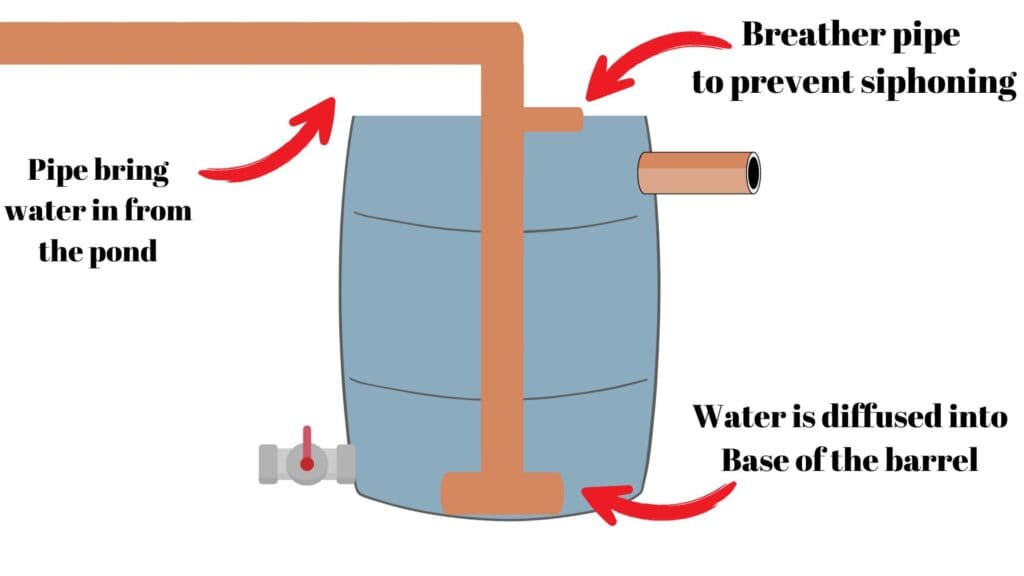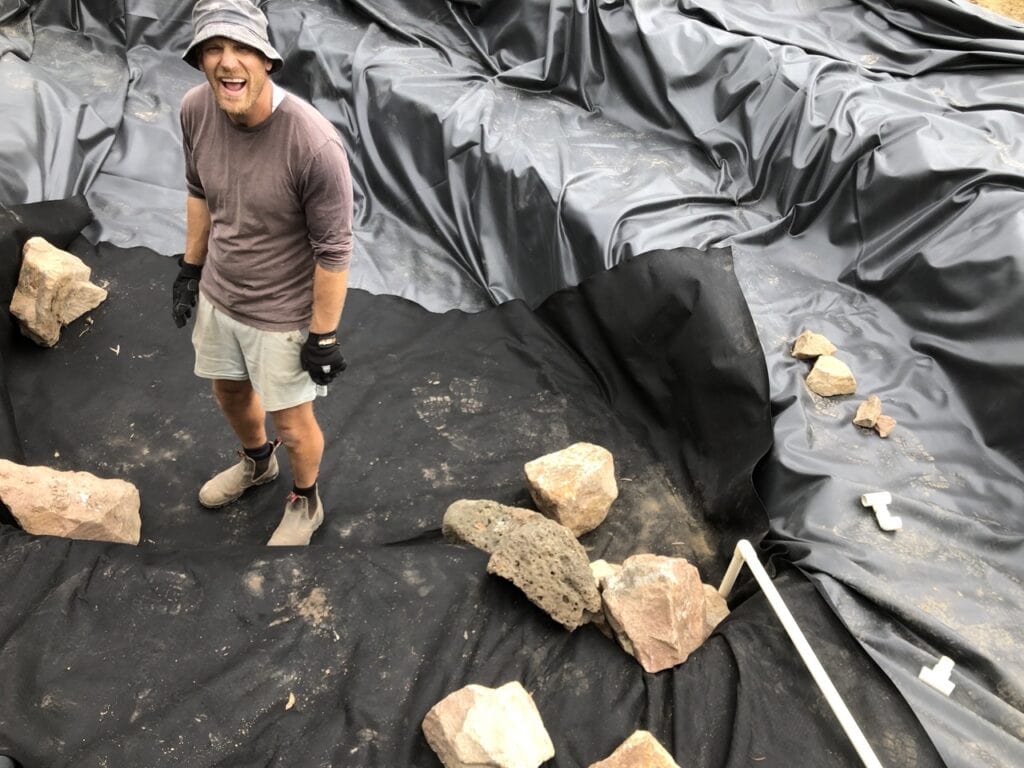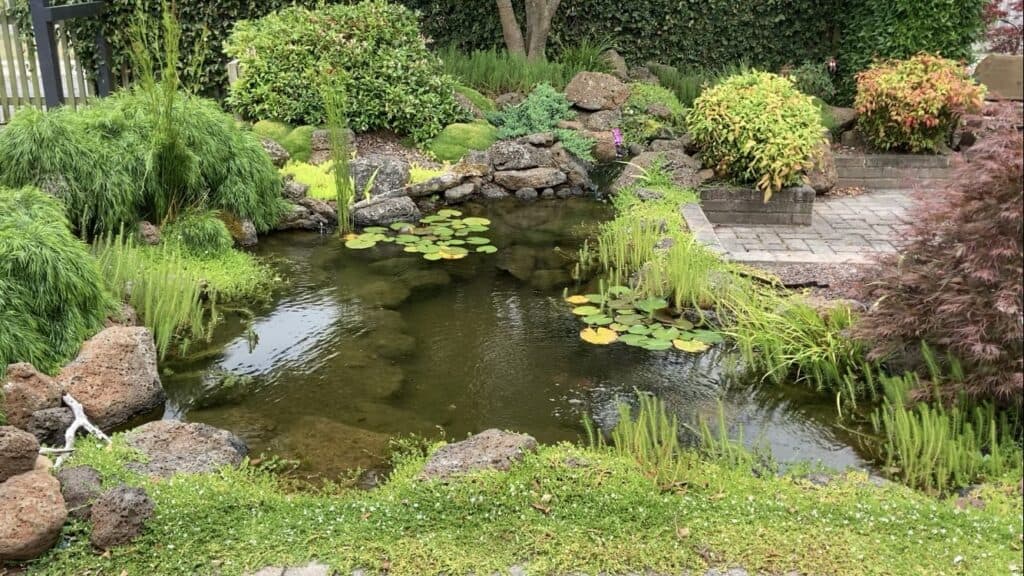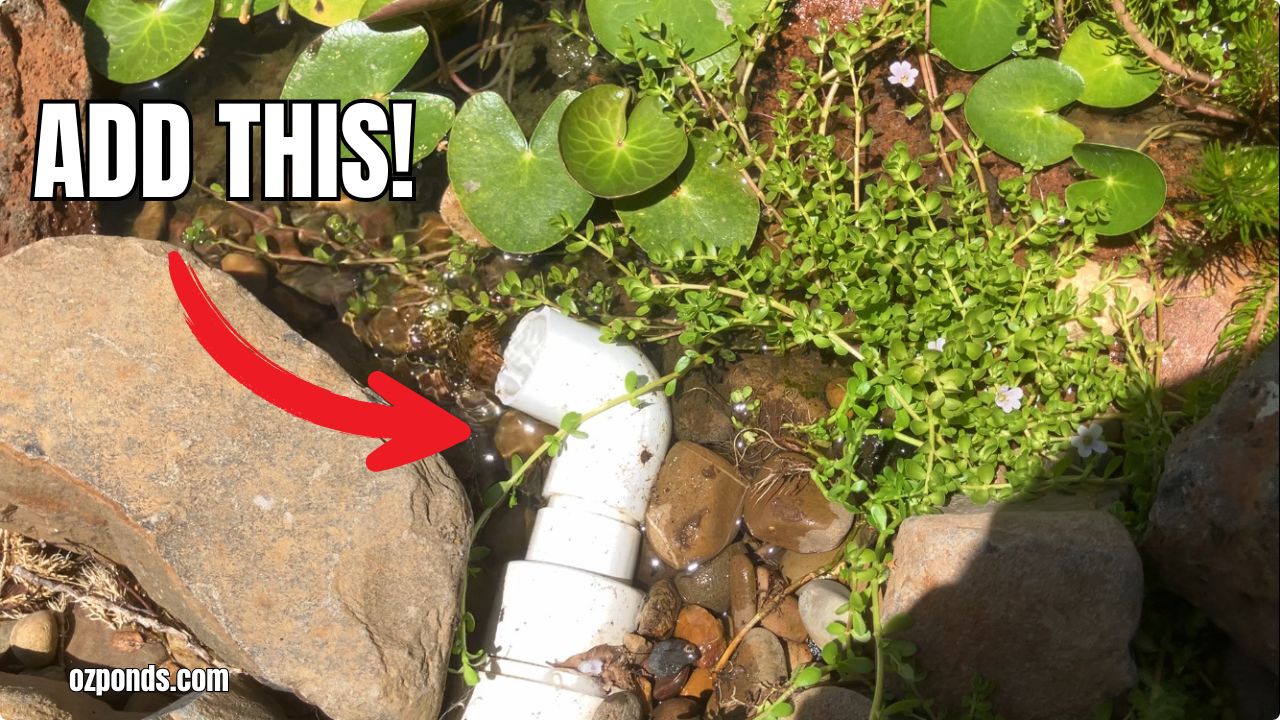Building a bog filter is one of the easiest and most effective DIY pond filters you can create. It’s affordable, efficient, and low-maintenance, making it an excellent choice for pond enthusiasts.
Over the years, I’ve explored various designs, sharing my findings and answering countless questions. One of the most common topics that comes up is the breather pipe—what it is, why it’s important, and how to make the most of it.
In this post, I’ll explain the breather pipe’s purpose, how to install one, and some creative ways to utilise the extra water it can produce. If you prefer video content you can watch the video I recorded below:
What Is a Bog Filter?
A bog filter is a type of pond filtration system where water is pumped into the base of a container, or area that is filled with rocks, pebbles, and plants.
The water flows upward (an up-flow system) through the filter media, which traps debris and provides a surface for beneficial bacteria to thrive.
The filtered water then overflows back into the pond, creating a continuous cycle of clean, oxygen-rich water.
If you’d like to know more about why I prefer the up-flow design, I’ve covered it in detail in another post or you might like the video below:
The Problem with Siphoning
One key issue with bog filters arises when the pump shuts off (e.g., during a power outage). Without safeguards, the water in the filter can siphon back into the pond (a bog filter is often positioned higher than the pond), causing two major problems:
- Sediment Backflow: A bog filter naturally collects sediment. Allowing it to flow back into the pond defeats the filter’s purpose.
- Drying Out Beneficial Bacteria: The bacteria that process waste in your pond thrive on wet surfaces. If the filter drains and dries out, the bacteria can be harmed, reducing the filter’s efficiency.
Why Use a Breather Pipe?
A breather pipe is a simple solution to the siphoning problem. By adding a breather pipe near the top of the filter, you allow air to enter the system when the pump shuts off. This stops the siphoning process immediately, keeping water in the filter and sediment out of your pond.
Unlike check valves (amazon link), which can fail over time, a breather pipe is a foolproof and maintenance-free option.

Installing a Breather Pipe
Here’s how I incorporate a breather pipe into my bog filter design:
- Tee Off the Breather Hole: By adding a tee fitting, water naturally flows down into the base of the filter. However, depending on flow rate and sediment buildup, some water may escape through the breather hole.
- Control Water Escape:
- Add a valve to regulate flow if you’re using an oversized pump.
- Use an elbow fitting with a vertical pipe to raise the breather hole opening above the filter’s overflow. This ensures no water escapes unnecessarily.
The video below shows the full construction of a simple bog filter, along with how the water is prevented from exiting the breather hole.
Creative Uses for the Breather Pipe
The breather pipe’s excess water can be put to good use:
- Streams and Waterfalls: Redirect the water to create aesthetic features.
- Additional Filtration: Use the extra flow for a dedicated solids filter.
- Air Exchange: Increased water movement boosts dissolved oxygen, enhancing your pond’s ecosystem.
On my solar-powered pond system, the breather pipe prevents siphoning and supports two small streams. One of these streams uses excess water from the main plumbing line, which keeps the filter water intact during pump shutoffs.
Oversized Pumps: Pros and Considerations
Why oversize your pump? Higher flow rates improve water movement, which:
- Increases dissolved oxygen levels.
- Allows beneficial bacteria to work more efficiently.
- Provides more flexibility for creative pond features like waterfalls and streams.
If you’re designing a bog filter system and considering pump sizes, my PDF guide includes all the formulas I use.

Blueprint I use to build my ponds
- All the numbers I use to design my ponds, delivered straight to your inbox
- These formulas have helped people all over the world build beautiful, low maintenance ponds, without spending a fortune.
- Access to a private community of like minded people and a chat bot that loves answering pond related questions.
Conclusion
A bog filter is great for maintaining a clean and healthy pond, and the breather pipe is a critical component for ensuring its effectiveness.
By preventing siphoning, you protect your pond from sediment back-flow and keep your beneficial bacteria thriving.
I hope this article and the resources I’ve linked were helpful. Thanks for reading and consider joining my mailing list.

Join my free email list
If you would like to join my free email list click the button below.
I promise I won’t spam you, I’ll only send information I think can help you save money building and maintaining a pond.

